
Reviewed by Sean Hert

|
IJN Battleship Mikasa
Mikasa was built at the shipyards of Vickers Sons & Maxim, Barrow-in-Furness, England. Armed with 4 - 12" (2x2 fore and aft), and numerous secondaries, Mikasa was a formidable dreadnaught. She served as Admiral Togo's flagship, and from her bridge he commanded the Japanese Fleet in the victory of the Russian Fleet at the Battle of Tsushima during the Russo-Japanese War of 1904-1905. The Mikasa is now preserved in the Mikasa Park, Yokosuka City as one of the last remaining pre-dreadnaught era ships. |
|||||
| IN-THE-BOX | |||||
| The kit comes in a moderate sized box. This is the special First Production kit, which has the normal box inside a special commemorative sleeve. Inside the box are the instructions, some basic decals, anchor chain, and 11 sprues of parts. Also inside this special edition kit is a 54mm white metal figure of Admiral Heihachiro Togo, a special memorial metal of the battle, and a poster of the cover art. | |||||

|

|
||||
| HULL | |||||
|
The hull comes in two finely molded halves. Detail is crisp, even to the inner detail on the casemate doors, but there is no evidence of hull plating. The deck detail are also nice and crisp, but I was surprised to notice the planking has not vertical lines to differentiate between planks; just long horizontal lines for each row. My quick measurements showed the Mikasa hull to be a bit too long, and a bit too narrow. Your milage may vary. |
|||||
|
|
|

|

|
||
| SUPERSTRUCTURE AND ARMAMENT | |||||
|
Mikasa's other sprue have a wide selection of finely detailed parts. I notice some new tricks on the sprues to insure good parts; some parts of multiple gates or little "sprue-lets", so examine each part closely when removing; that nub may or may not be important! The ship's boats all like great, and boy it looks like there's a lot of them. The secondary guns are very nice as well. All the barrels look good- brass upgrade ones may not be necessary! Some of the bridge detail, like the railings and such, look a touch heavy, but I think it's more of the nature of styrene models than anything else. |
|||||
|
|
|
|
|
|
|
|
|
|
|
|
|
|
| INSTRUCTIONS | |||||
|
The kit comes with a 16 pages of instructions
, spread over two sheets. There are 28 steps overall.
Many of the steps span multiple pages, like the excellent painting guide and the rigging reference chart.
Sadly, spanning multiple makes make them difficult to scan for this review.
To anyone who builds other Hasegawa kits, the instructions are classic Hasegawa in theme and layout. Steps seem to be clearly laid out and easy to follow. Also included in this kit are painting guidlines for the Admiral Togo figure. Here are a few sample steps from the instructions. |
|||||
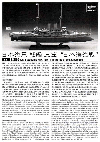 |
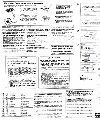 |
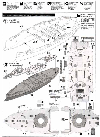 |
|||
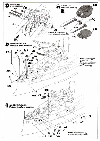 |
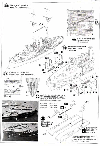 |
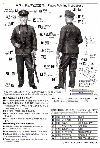 |
|||
| CONCLUSION | |||||
|
This kit is the first kit to be released by a major hobby manufacturer in this Anniversary year of the Battle of Tsushima. There are have been some Russian warships released, but this is the first Japanese offering. It is also the first new larger scale ship offering from Hasegawa in some time, and it is a welcome addition! The kit has lots of nice detail, and assuming Hasegawa has kept their usual standards, should build easily into a very nice ship. I was a little disappointed to see the scale seems a bit off, but I wasn't highly accurate with my measuring; plus, finding two references to agree on dimentions can be nigh impossible- and Hasegawa as access to the real thing! Mikasa is priced at $99.95 retail, which feels a bit dear for a ship the length of a large destroyer, but seems on par between the older Tamiya offerings and the newer Trumpeter ones. Provided by Hobbyland, Columbus OH |
|||||

© ModelWarships.com |
|||||